Description
Kitchen Food Storage Allowing the Right Environmental Conditions According to Food Type
Sommaire
Sommaire
[masquer]- 1 Description
- 2 Sommaire
- 3 Introduction
- 4 Étape 1 - The "Zero Waste" Approach
- 5 Étape 2 - Step 2 - General Information on the Food Storage Implements
- 6 Étape 3 - Environment 1: Dry, Ventilated, Room Lit
- 7 Étape 4 - Environment 2: Dry, Ventilated, Dark
- 8 Étape 5 - Environment 3: Dark, Cold, Humid
- 9 Étape 6 - Environment 4: Dark and Cold
- 10 Étape 7 - Climacteric Fruits and Vegetables
- 11 Étape 8 - Overview Table
- 12 Notes et références
- 13 Commentaires
Introduction
A Quick Survey of the Food Waste Situation
In the world, 1/3 of the total of food production is thrown away.
In France, this constitutes 10 billion kilograms (22 billion pounds) of wasted food each year, the carbon impact of which is equivalent to 5 times the country's domestic air traffic per year.
The analysis of the food waste data shows that 33% of this is made on the last link of the chain: the consumer.
The losses amount to a global cost of 160€ ($189 USD)/year per person.
Quantitatively, fruits and vegetables constitute the most substantial losses (50%).
However, even though they represent just 6% of all food waste, it is animal products (meat, fish, dairy) that represent the most significant financial loss.
Causes of Food Waste
In order to design and implement the proper solutions to reduce waste, it is useful to take a look at an analysis of its causes:
•Sociological causes: Our pace of living; family structures; the ways of organizing our days and our meals shifting over time. We are more hurried and less attentive, which brings about food waste.
•Cultural causes: Our perceptions of food, our aesthetic criteria, and our manner of feeding ourselves lead to a dismissal of products that are nonetheless consumable.
•Poor knowledge of keeping or conserving foods: conserving is not synonymous with making something cold--a refrigerator is not made to accommodate all types of food. In addition, confusions arise between terms such as "Use by," "Best-Before," and "Expired by."
•Organizational problems: We lack organization before doing our grocery shopping, wherein we question our needs and plan to buy the appropriate quantities. Refrigerators and cabinets are equally sources of numerous losses due to storage space that encourages stacking new food in front of older food.
It's important to note that a good number of these causes can be remedied by better practices that anyone can put into place. Technical solutions can come to our aid, mainly by:
•Creating the right environmental conditions for conserving food according to food type
•Promoting better visibility of produce
•Making them more easily accessible.
Étape 1 - The "Zero Waste" Approach
The first step in using a food-storage system such as this is for the user to question the ways in which they buy and consume.
In fact, the food storage modules that we're going to propose below are mainly designed for raw and fresh foods. For example, it would be complicated for the user feeding themselves with ready-made meals to benefit from the technical suggestions provided.
The "Zero Waste" approach, originating from Franco-American Béa Johnson, is an excellent method to put into practice. It contributes at the same time to the reduction, in a significant way, of global production of waste material (packaging, plastic, etc).
Zero Waste France is a very good network for additional information on helping consumers take these actions.
Étape 2 - Step 2 - General Information on the Food Storage Implements
Since we mainly need to work on waste consisting of fruit, vegetables, and animals products, the focus is on short-term conservation.
Food conservation does not mean keeping cold but rather conserving the nutritional quality and taste of the foods.
For this reason, several storage environments are worth adopting for a built food storage solution.
Generally, among all short-term storage environments, the most basic technology of most value, in our experience, is the storage rack with slide-out trays.
It's a technical solution that can be easily integrated into a kitchen, permits direct visibility of all contents, and facilitates easy access to all the foods contained within, as opposed to a cupboard or a refrigerator.
The principal use of the sliding trays or drawers is to allow for good air circulation, a very important factor for keeping fruits and vegetables fresh. It can be made using wooden battens (between 2 and 3 cm wide each) or using wire netting or screen.
For the assembly of the food storage rack, an air gap of 3-4cm is to be integrated to back side in order for "exhaust" air and humidity to flow and not stagnate at the risk of spoiling the foods more quickly.
Étape 3 - Environment 1: Dry, Ventilated, Room Lit
Let's navigate this category by way of example: Apricot, eggplant, avocado, banana, citrus, tomatoes, but equally eggs or butter in a butter dish if it's not too hot.
In a kitchen for 2 people, we propose 2-3 drawers, measuring 15cm height by 40-50cm depth by 50cm width.
It is designed so that the front and back of the drawer allow for air circulation.
Étape 4 - Environment 2: Dry, Ventilated, Dark
This food keeping environment is useful notably for potatoes, onions, garlic, squashes, etc. The dark atmosphere prevents the germination of tubers and roots as well as the ripening of certain fruits.
In a kitchen for 2 people, we propose 2 drawer-racks lined with a fabric such as linen or jute, both to create darkness and to ensure ventilation.
About 25cm height, 40-50cm depth, and 50cm width. It is necessary to make them a bit taller than the preceding environment in order to keep carrots vertically in a box of lightly humid sand, which will be arranged in one of the drawers.
Étape 5 - Environment 3: Dark, Cold, Humid
For an existing living space:
This environment is the most difficult to create in an existing space; however, it is very useful as it can allow you to keep the refrigerator off for a part of the year.
For existing spaces, it is possible to draw inspiration from the refrigerator of the desert, or the "zeer pot."
It is essentially made of one pot nested within a second. Sand is added between the two. The foods are placed in the central pot and the sand is regularly humidified. Due to the evapo-transpiration effect (evaporation from both mineral and plant sources), the interior temperature can drop between 5-10°C (41-50°F) lower than the room temperature.
For a new living space:
In the case of a new living space, it's possible to imagine in the manner of the old Parisian garde-mangers, the boxes opening to the outside--to the north--via a window dedicated to this usage (or in a non-insulated room division in this case).
In this environment, you can store: Artichoke, Cucumber, Beans, Parsnip, Butter, etc.
For sizing, an interior volume of 40L divided in two is suitable (for example 40cm height, 40cm width, and 30cm depth).
Étape 6 - Environment 4: Dark and Cold
This environment is achieved thanks to the refrigerator. The idea is to work on reducing the size of it by keeping only leftovers, dairy, meat, fish, and cold beverages inside.
Another positive effect is that the reduction in refrigerator size acts directly to reduce electricity consumption.
For two people, we propose the use of a 40L refrigerator (home bar, dorm, or hotel style). Depending on the allotted budget, it may be possible to find a refrigerator with a clear door that allows you to directly see the contents; however, they cost significantly more.
Be sure, however, to choose a refrigerator where the vertical storage of standard-sized bottles is possible for the most functionality.
Avoid placing the refrigerator next to the oven (which is the case in numerous kitchens) for the most efficiency.
The release of heat from the back of the refrigerator into the air gaps of a food storage rack will benefit the circulation of air and humidity of the entirety of the storage system.
Étape 7 - Climacteric Fruits and Vegetables
In most environments, a second factor comes into play in the conservation of fruits and vegetables: whether they emit ethylene, a gas that promotes ripening, and whether or not they are sensitive to it according to vegetable or fruit type.
Fruits and vegetables that produce ethylene and that continue to ripen after harvest are called "climacteric," while others can be very sensitive and rot more quickly upon contact with ethylene.
A simple rule is to keep separate the foods that release ethylene from those that are merely sensitive to it. This is why it's good to have at least two drawers per environment and that they be large and ventilated, so the ethylene can properly escape.
Étape 8 - Overview Table
| Low-tech Lab / Environment by Food Type | Short-term Food Storage Environment | Climacteric Factor | ||||
| Food Types | Cool, Humid and Dark | Dry, Ventilated, Room Lit | Dry, Ventilated, In the Dark | Other? | Ethylene Producer | Sensitive to Ethylene |
| Apricot | x | x | x | |||
| Garlic | x | |||||
| Pineapple | x | |||||
| Artichoke | x | |||||
| Asparagus | x | Refrigerator Crisper | ||||
| Eggplant | x | x | ||||
| Avocado | x | x | x | |||
| Banana | x | x | x | |||
| Chard | x | |||||
| Beet | x | |||||
| Broccoli | x | Refrigerator Crisper | x | |||
| Carrot | x | x | ||||
| Celery | x | |||||
| Cherry | x | x | ||||
| Mushroom | x | |||||
| Cauliflower | x | Refrigerator Crisper | x | |||
| Cabbage | x | |||||
| Lemon | x | |||||
| Pumpkin | x | |||||
| Clementine | x | |||||
| Cucumber | x | x | x | |||
| Coriander, Cumin | x | |||||
| Squash | x | |||||
| Courgette | x | x | ||||
| Shallot | x | |||||
| Endive | x | Refrigerator Crisper | x | |||
| Strawberry | x | |||||
| Legumes (beans, lentils) | x | |||||
| Seed Spices | x | |||||
| Green Beans | x | Refrigerator Crisper | x | |||
| Kiwi | x | x | ||||
| Mango | x | |||||
| Melon | x | x | x | |||
| Blackberry | x | |||||
| Turnip | x | |||||
| Onion | x | |||||
| Orange | x | |||||
| Parsnip | x | |||||
| Watermelon | x | |||||
| Sweet Potato | x | |||||
| Peach | x | x | x | x | ||
| Parsley, Chives, Mint, Fresh Coriander, Dill, | In a glass of water | |||||
| Pear | x | x | x | x | ||
| Leek | x | |||||
| Pepper | x | x | x | |||
| Pomelo | x | |||||
| Apple | x | x | x | |||
| Potato | x | |||||
| Plum | x | x | x | x | ||
| Radish | x | |||||
| Grapes | x | |||||
| Arugula | x | |||||
| Lettuce | x | x | ||||
| Tomato | x | x | x | |||
| Leftovers | Refrigerator | |||||
| Dairy | Refrigerator | |||||
| Meat and Fish | Refrigerator | |||||
Notes et références
By Pierre-Alain Lévêque for Low-tech Lab, August 2019
Published
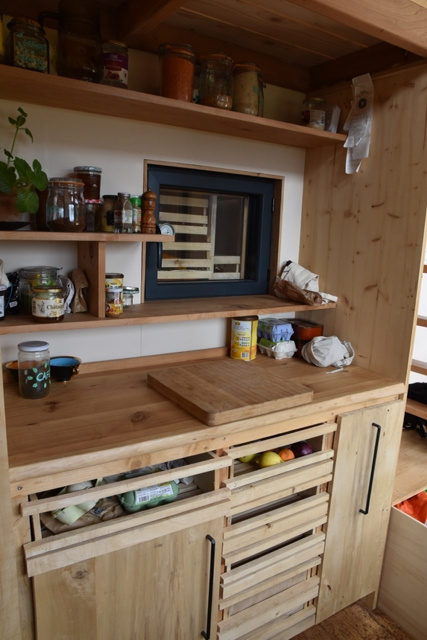
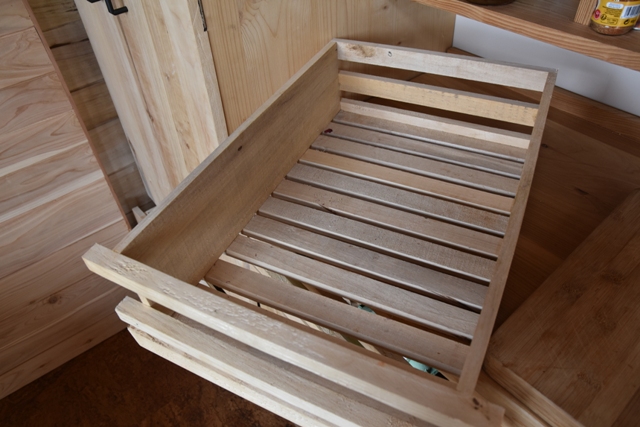
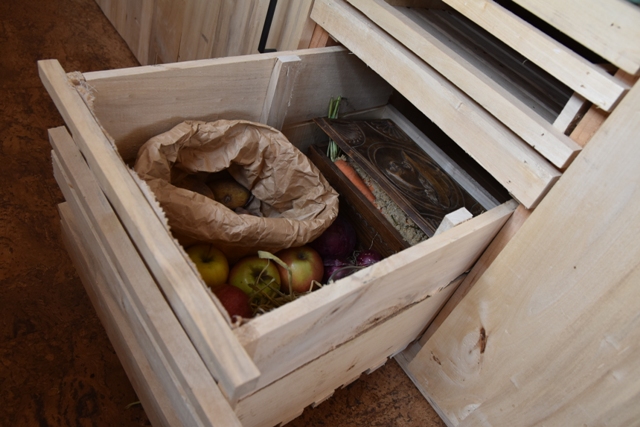
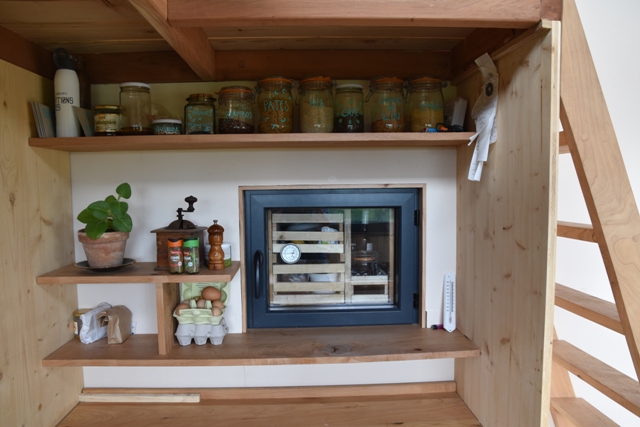
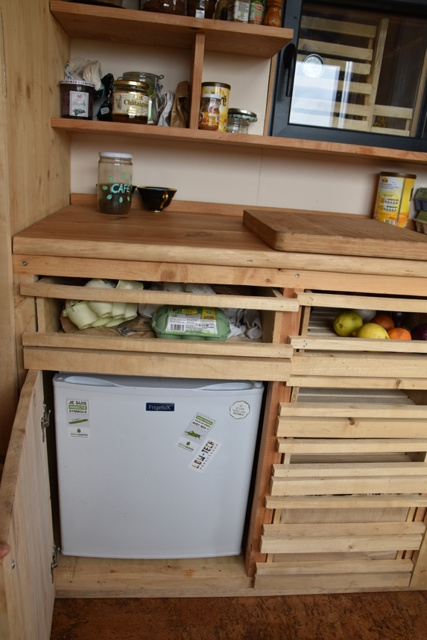
 Français
Français English
English Deutsch
Deutsch Español
Español Italiano
Italiano Português
Português